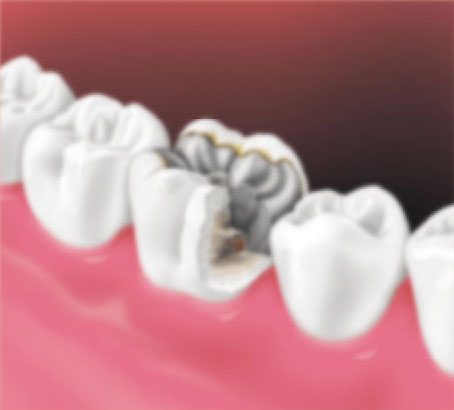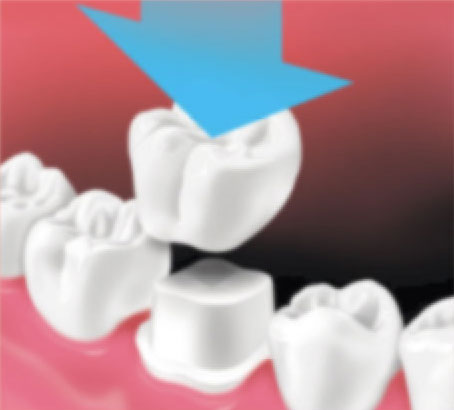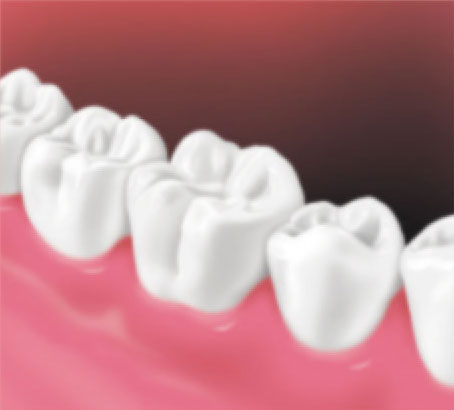- Removable Partial Dentures
- Tooth Extraction: Post-Operative Instructions
- Your Wisdom Teeth
- Taking Care of Your Teeth and Gums
- Basic Flossing
- Do You Have a Cracked Tooth?
- Periodontal Disease: Your Complete Guide
- Basic Brushing
- Periodontal Disease: Keep Your Gums Healthy
- Fluoride: Nature's Cavity Fighter
- Hate To Floss? 3 Other Ways to Clean Between Your Teeth
- Handling Your Child's Dental Emergency
- Get the Facts about Mouth and Throat Cancer
- Oral Health and the HPV Vaccine
- Do You Grind Your Teeth?
- Tooth Decay in Baby Teeth
- Do You Have Sleep Apnea?
- Your Single Tooth Implant
- Your Child's Teeth
- Tobacco and Oral Health
- Seal Out Decay
- Temporomandibular Disorders (TMD)
- Healthy Smiles for Mother and Baby
- Healthy Mouth, Healthy Body: Making the Connection
- Baby Teeth: When They Come In, When They Fall Out
- Thumb Sucking, Finger Sucking and Pacifier Use
- Sip and Snack All Day? Risk Decay!
- 3 Tooth Replacement Options
- Tooth Erosion
- Tooth Decay
- Treating Cavities
- Should You Take Antibiotics before Your Dental Treatment?
- Mouthguards and Sports Safety
- Gum Recession Causes and Treatments
- Dental X-Ray Exams
- Diabetes and Your Oral Health
- Scaling and Root Planing
- Pregnancy and Oral Health
- Your Dentures
- Your Child's First Visit to the Dentist
- Root Canal Therapy Can Save Your Tooth
- Periodontal Disease - Don't wait until it hurts
- Why Do I Need a Bridge?
- Why Do I Need a Crown?
- Your Smile - An Owner's Manual
- Dental Sealants Protecting teeth, preventing decay
- Happiness is a Healthy Smile
- Dental Veneers - Improve Your Smile
- Tooth Whitening for a Brighter Smile
- Why Baby Teeth Are Important
- Dry Mouth
- Sealant Quick Reference
- Caries en Dientes de Leche
- Why Doesn't My Insurance Pay for This?
- Periodontal Maintenance: Stay on Top of Gum Disease
- Flossing Quick Reference
- Brushing Quick Reference
- Your Child's Teeth: Ages 6–12
- Your Child's Teeth: From Birth to Age 6
- Dental Implants: Are they an option for you
- Mouth Sores and Spots
- Sipping, Snacking and Decay
- Improving Your Smile
- Your Child's First Dental Visit
What is a Crown?
A crown is a cover or “cap” your dentist can put over a tooth. A crown restores a damaged or missing tooth to its normal shape, size, and function. A crown can protect the tooth or improve the way it looks.
Your dentist may recommend a crown to:
- Support a tooth that has a large filling when there isn’t enough natural tooth structure remaining.
- Attach a bridge to replace missing teeth.
- Protect a weak tooth from fracturing.
- Restore a fractured tooth.
- Cover a badly shaped or discolored tooth.
- Cover a dental implant.
What is Your Crown Made From?
Crowns can be made from several types of materials. Metal alloys, ceramics, porcelain, porcelain fused to metal, or composite resin may be used. When a crown is made, the material often is tooth-colored to blend in with your natural teeth.
You want your crown to look natural and fit comfortably in your mouth. To decide which material to use for your crown, you and your dentist will consider many factors, such as:
- The tooth’s location and function.
- The position of the gum tissue.
- The amount of tooth that shows when you smile.
- The color or shade of the surrounding teeth.
- Costs and insurance should also be discussed and considered.
After you and your dentist have looked at these factors, you might want to talk about your personal preference.
Steps of Placing a Crown
It usually takes two dental visits to complete the treatment. When a crown is placed over a natural tooth, several steps are involved:
- Your dentist prepares the tooth by removing the outer portion, including any decay, so the crown will fit. If additional tooth structure is needed to support the crown, your dentist may build up the core of the tooth.
- An impression is made to create an exact model of your tooth. The impression can be made from a mold or by digitally scanning the tooth.
- To protect your tooth while the permanent crown is being made, a temporary crown is placed. Making the permanent crown usually takes less than 2 weeks. While you have a temporary crown, the tooth may be sensitive to hot and cold. Avoid chewing gum and eating sticky foods during this time. If your dentist has special equipment, you may be able to get your permanent crown on the same day.
- When the permanent crown is ready, your dentist places it in your mouth and makes the necessary adjustments. When you and your dentist are happy with how it looks and feels, the crown is cemented into place.
Crown Placement

Before crown: Worn filling with decay under filling

Crown is placed over prepared tooth

After crown placement
Caring for Your Teeth
Like natural teeth, crowns can break. And, the tooth under the crown can still get cavities. To prevent cavities or damage to your crown:
- Brush your teeth twice a day with a fluoride toothpaste and clean between your teeth every day. Look for oral care products that have the American Dental Association’s Seal of Acceptance, which tells you they meet ADA standards for safety and effectiveness.
- Avoid chewing hard foods, ice, or other hard objects, such as pencils, especially if you have tooth-colored crowns.
- Be sure to see your dentist for regular exams and professional teeth cleanings.
Visit Our Office
Office Hours
- MON8:30 am - 5:00 pm
- TUE8:30 am - 5:00 pm
- WEDClosed
- THUClosed
- FRI8:30 am - 5:00 pm
- SAT9:00 am - 2:00 pm
- SUNClosed